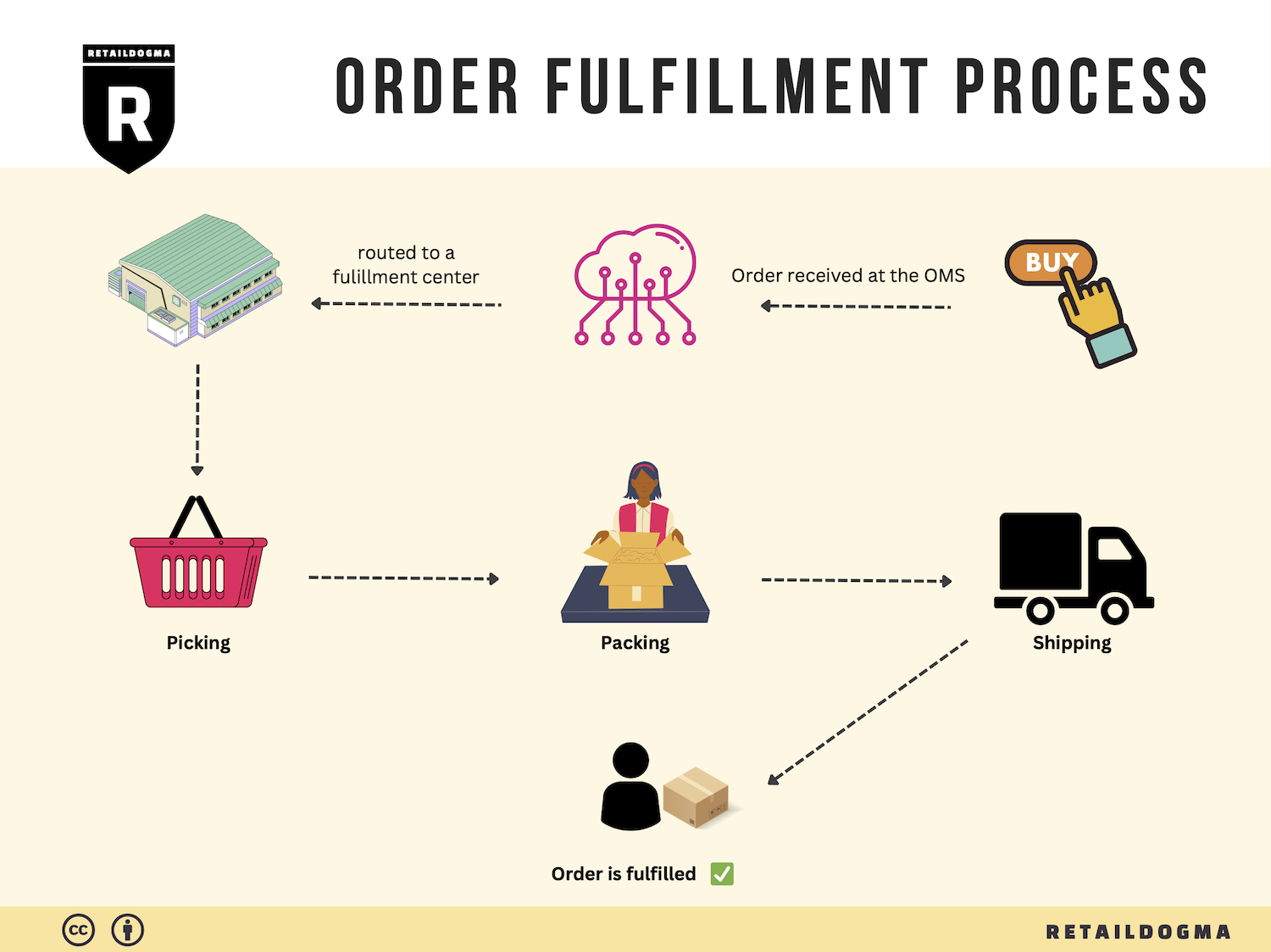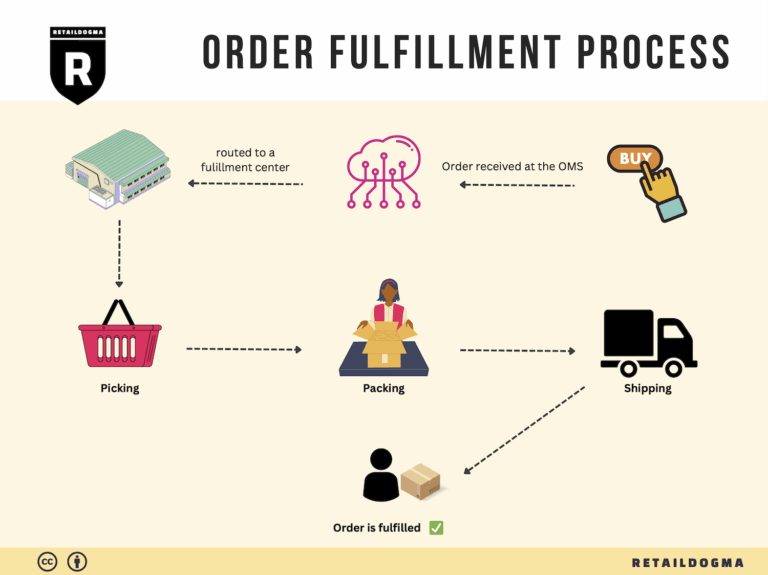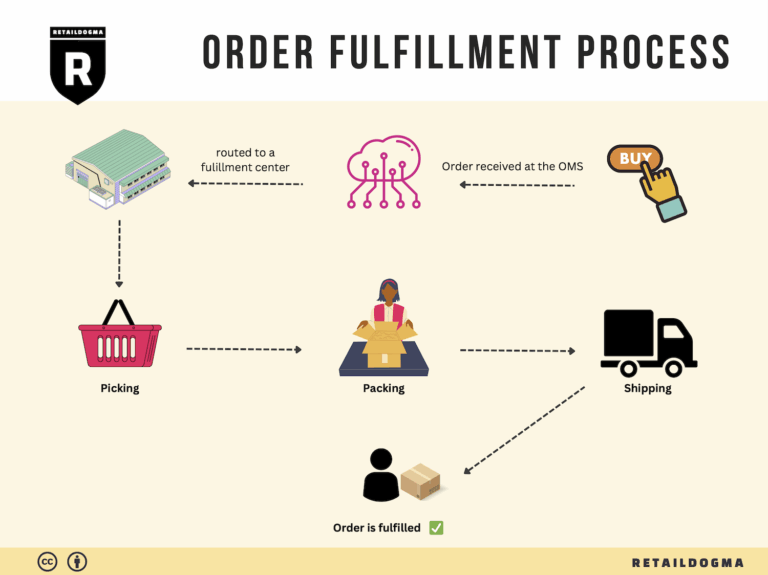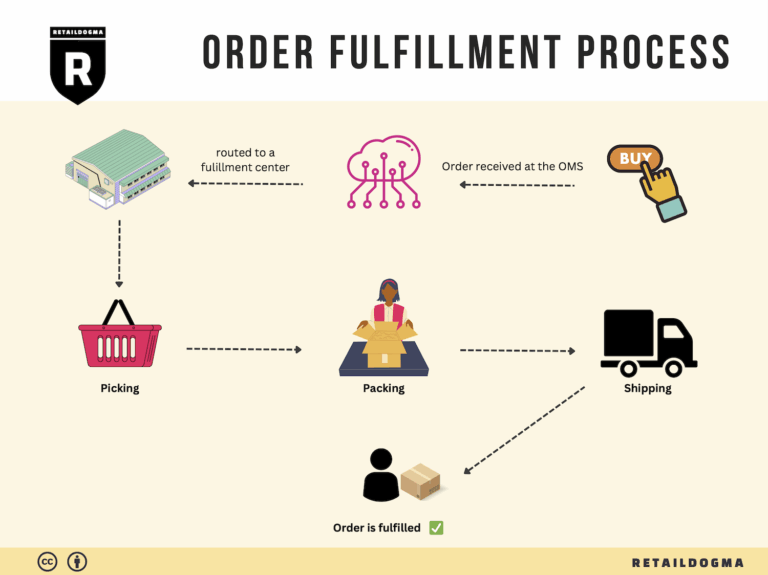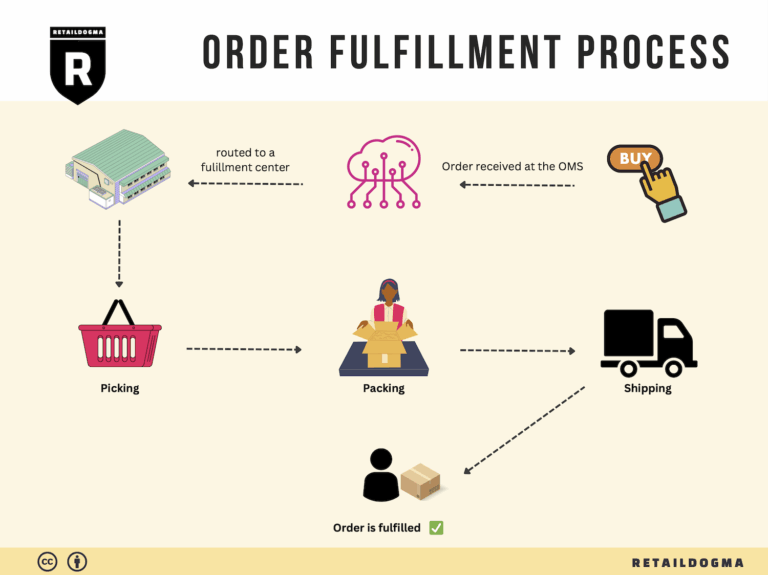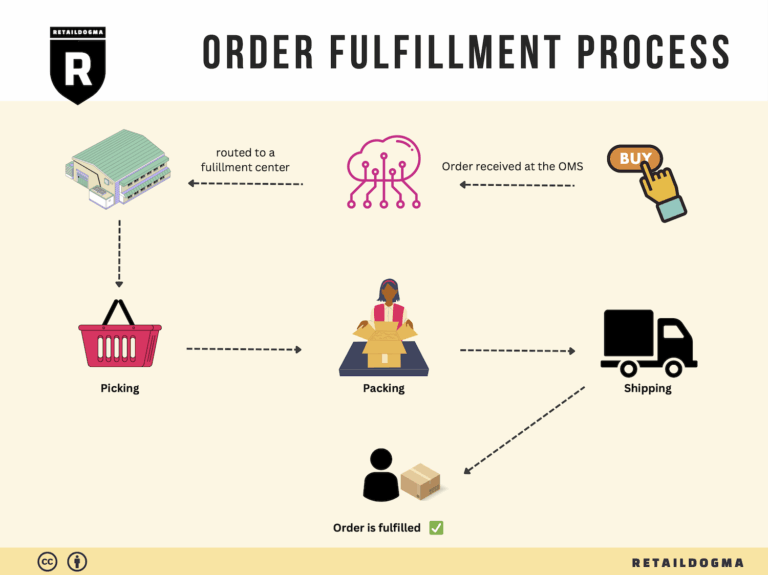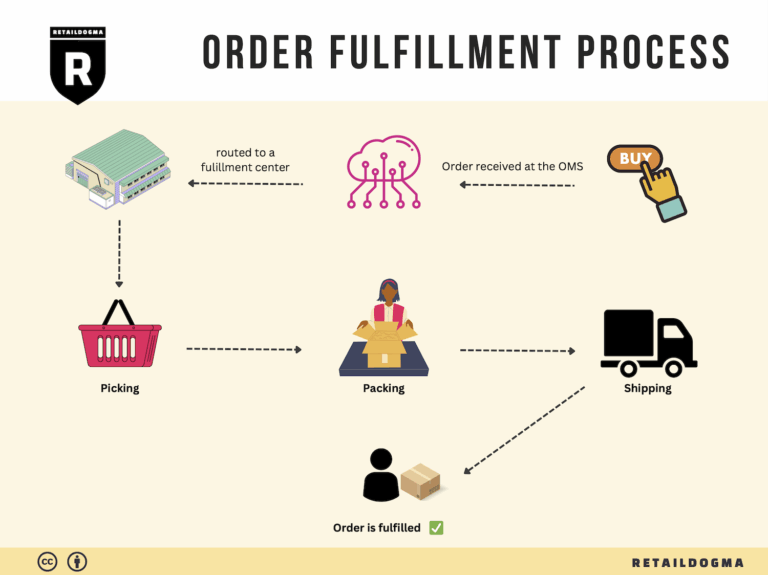Ecommerce Fulfillment Services: The Ultimate Guide (2025)
What is E-commerce Fulfillment? An Introduction for Growing Businesses
Understanding the Challenges of E-commerce Fulfillment
As an e-commerce business owner, you may find yourself overwhelmed by the sheer volume of orders that need to be packed and shipped. What starts as a passion project can quickly transform into a logistical nightmare, leaving you scrambling to meet customer expectations while managing your inventory, packing processes, and shipping logistics. This is where e-commerce fulfillment comes into play.
E-commerce fulfillment is simply the process of getting a product to a customer after they place an order online. It encompasses a wide range of activities, including receiving and storing inventory, processing orders, picking items, packing them securely, and finally shipping them to the customer’s doorstep. Given its critical role in customer satisfaction, developing an efficient fulfillment strategy is essential for scaling your business.
What This Guide Will Cover
In this comprehensive guide, we will explore various aspects of e-commerce fulfillment that can empower you to make informed decisions about your logistics. Here’s what you can expect to learn:
-
Fulfillment Models: We will delve into different fulfillment models such as Third-Party Logistics (3PL) and Fulfillment by Amazon (FBA), helping you understand the pros and cons of each to determine which aligns best with your business needs.
-
Core Services: You’ll gain insights into essential fulfillment services including order management, inventory management, warehousing, shipping, and returns management. Understanding these services will help you streamline your operations.
-
Choosing a Partner: Selecting the right fulfillment partner can make or break your e-commerce operations. We’ll provide a framework for evaluating potential partners based on their capabilities, technology, and track record, ensuring you find a solution that fits your growth trajectory.
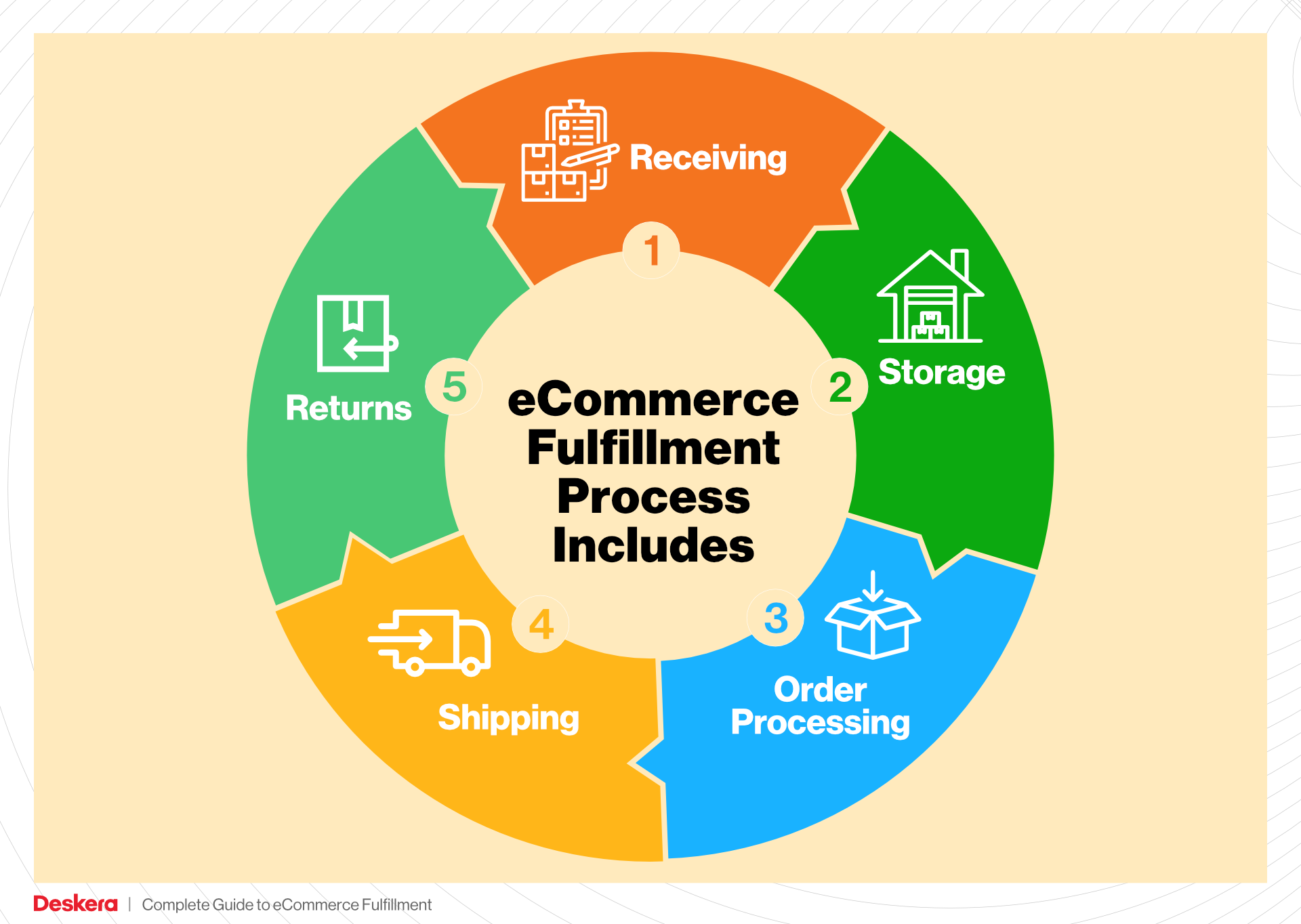
-
Pricing Considerations: Fulfillment costs can vary significantly depending on the services you choose and the provider you partner with. We’ll break down common pricing structures and help you identify hidden costs to prepare for sustainable growth.
Empowering Your Logistics Decisions
The ultimate goal of this guide is to empower your business with the knowledge and tools necessary to make smart logistics decisions. As you navigate the complexities of e-commerce fulfillment, a well-informed approach will not only enhance customer satisfaction but also drive operational efficiency and profitability. By understanding the fulfillment landscape, you can focus on what you do best: growing your business.
What You’ll Learn In This Guide
- What is E-commerce Fulfillment? An Introduction for Growing Businesses
- The Order Fulfillment Process: From ‘Buy’ Button to Customer’s Door
- Comparing Fulfillment Models: In-House vs. 3PL vs. Dropshipping
- A Deep Dive into Amazon FBA: Pros, Cons, and Who It’s For
- Core Services Offered by Fulfillment Centers
- How to Choose a Fulfillment Partner: A 6-Point Checklist
- Understanding Fulfillment Pricing: A Breakdown of Common Fees
- Frequently Asked Questions (FAQs) about Fulfillment
- Conclusion: Is Outsourcing Fulfillment the Right Move for Your Business?
- Important Disclaimer
The Order Fulfillment Process: From ‘Buy’ Button to Customer’s Door
1. Receiving Inventory
The order fulfillment process begins with receiving inventory. When products are delivered to your warehouse or fulfillment center, they must be checked in and logged into your inventory management system. This step is crucial as it ensures that all incoming goods are accounted for, inspected for damage, and correctly categorized with the appropriate Stock Keeping Units (SKUs).
Why It’s Important: Proper receiving practices help maintain accurate inventory levels and prevent discrepancies that can lead to stockouts or overstock situations. Accurate inventory tracking is essential for meeting customer demand and optimizing cash flow.
Key Term: SKU (Stock Keeping Unit) – A unique identifier for each distinct product and service that can be purchased, helping businesses track inventory levels.
2. Warehouse Storage
Once inventory has been received, it is stored in the warehouse until orders are placed. Effective warehousing involves organizing products in a manner that maximizes space and minimizes retrieval time. Implementing a Warehouse Management System (WMS) can facilitate this process, allowing businesses to manage their inventory efficiently and keep track of product locations.
Why It’s Important: Efficient warehouse storage is vital for minimizing picking time and ensuring that products are readily available for order fulfillment. A well-organized warehouse also aids in inventory turnover and can significantly reduce operational costs.
Key Term: WMS (Warehouse Management System) – Software that supports the day-to-day operations in a warehouse, helping to manage inventory levels, optimize storage, and streamline order processing.
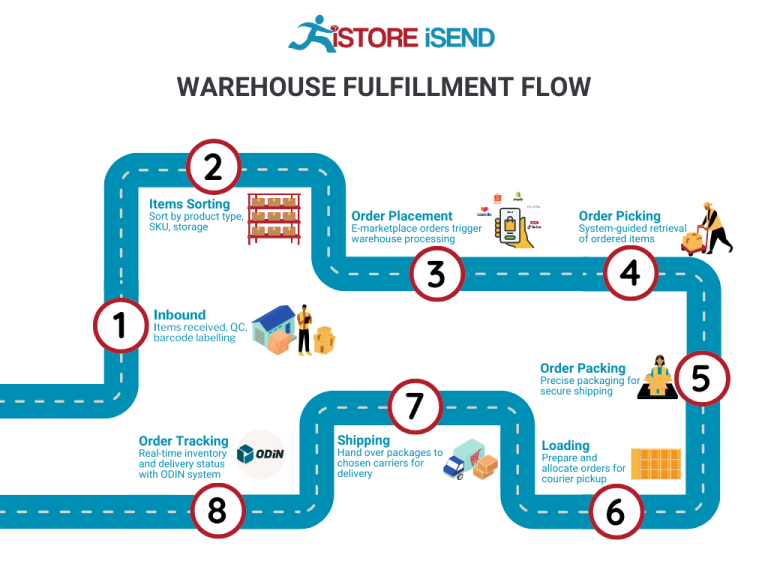
3. Order Picking
When a customer places an order, the next step in the fulfillment process is order picking. This involves selecting the correct items from the warehouse shelves based on the order details. Using tools like pick lists can streamline this process, allowing warehouse staff to quickly gather the necessary products.
Why It’s Important: Accurate order picking is critical for customer satisfaction. Mistakes in this step can lead to incorrect items being shipped, resulting in returns, refunds, and damaged customer relationships. Efficient picking also contributes to faster order processing times, meeting the growing consumer demand for quick deliveries.
Key Term: Pick List – A document or digital list that details the items to be picked from the warehouse for a specific order, often including product locations to facilitate efficiency.
4. Order Packing
Once the correct items have been picked, they are then packed for shipment. This involves checking items against the order, ensuring they are free from damage, and securely packaging them to prevent damage during transit. Effective packing processes may also include labeling and adding packing slips.
Why It’s Important: Proper packing is essential to ensure that products arrive at the customer’s doorstep in pristine condition. It also helps to reduce shipping costs by optimizing package size and weight. Furthermore, a well-executed packing process enhances the overall customer experience, reinforcing brand reputation.
Key Term: Packing Slip – A document included in the package that lists the contents of the shipment, serving as both a receipt and a confirmation that the correct items are being delivered.
5. Shipping & Delivery
The final step in the order fulfillment process is shipping and delivery. This involves selecting the appropriate shipping carrier and method based on the customer’s location, desired delivery speed, and shipping costs. Once packages are shipped, tracking information is usually provided to customers for real-time updates on their order status.
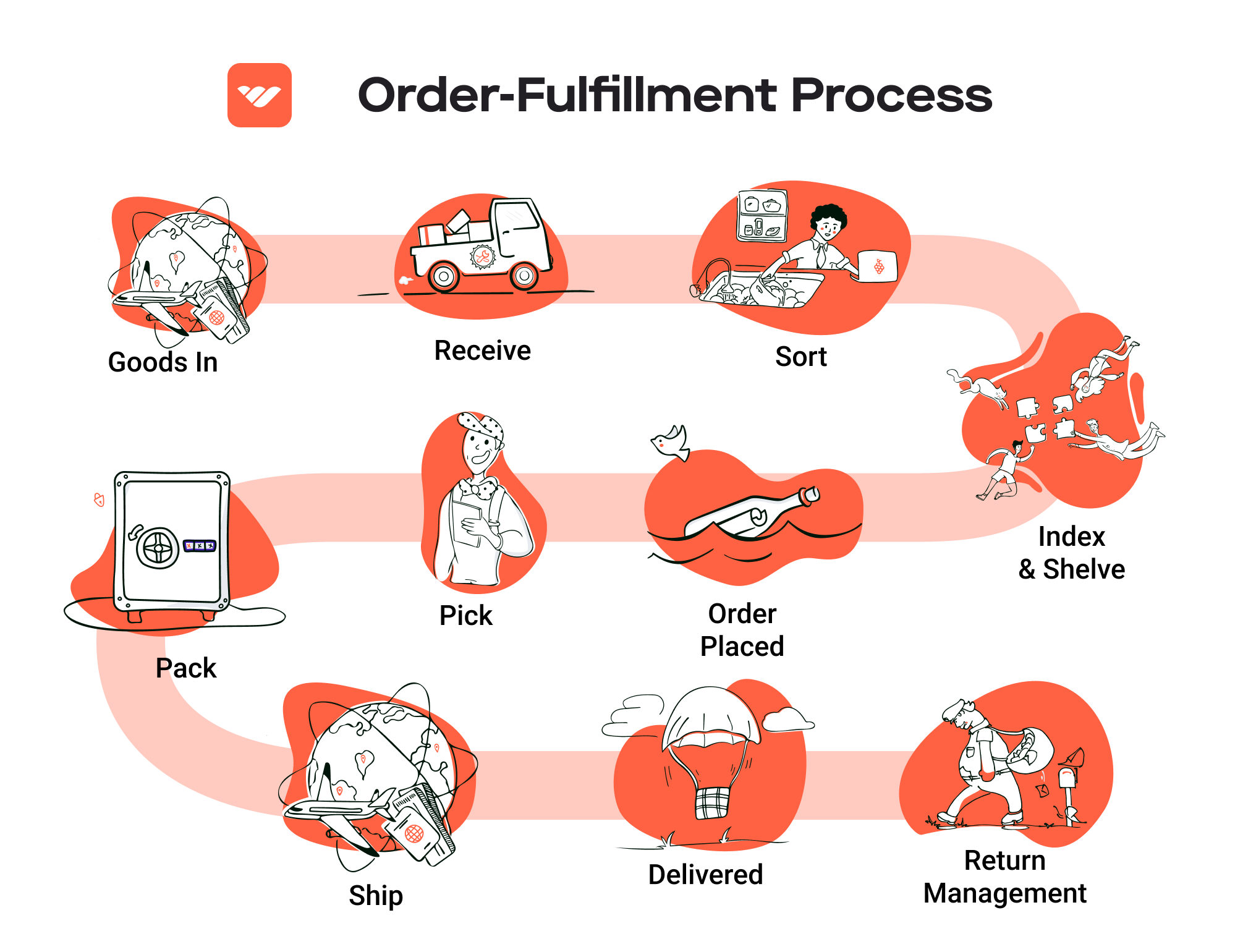
Why It’s Important: Efficient shipping and delivery are crucial for meeting customer expectations, especially in an era where fast shipping has become the norm. A reliable shipping process can significantly enhance customer satisfaction and loyalty, ultimately driving repeat business.
Key Term: Last-Mile Delivery – The final step of the delivery process where the package is transported from a distribution center to the final delivery destination, often considered the most critical part of the shipping process due to its impact on customer experience.
By understanding and optimizing each step of the order fulfillment process, e-commerce businesses can enhance operational efficiency, reduce costs, and improve customer satisfaction, laying a strong foundation for scalable growth.
Comparing Fulfillment Models: In-House vs. 3PL vs. Dropshipping
Fulfillment Model Comparison
| Model | Who Handles Inventory | Best For (Business Stage) | Key Advantage | Key Disadvantage |
|---|---|---|---|---|
| In-House Fulfillment | Business Owner/Team | Startups to Established Brands | Complete control over inventory and processes | High upfront costs and resource requirements |
| Third-Party Logistics (3PL) | Fulfillment Provider | Growing to Mid-Sized Brands | Scalability and expertise in logistics | Less control over fulfillment process |
| Dropshipping | Supplier/Vendor | New Entrepreneurs and Small Brands | Low overhead and no inventory risk | Lower profit margins and reliance on suppliers |
In-House Fulfillment
In-house fulfillment involves managing the entire logistics process internally, from inventory storage to order processing and shipping. This model is typically favored by startups and established brands that want to maintain complete control over their operations. Businesses handling their fulfillment can tailor their processes to meet specific customer needs, ensuring a personalized experience. Additionally, in-house fulfillment allows for immediate inventory checks, reducing the risk of stockouts and enabling better quality control. However, it often comes with high upfront costs associated with warehousing, staffing, and technology investments. As a business scales, the complexities of managing logistics can overwhelm internal teams, leading to inefficiencies and potential customer dissatisfaction if not managed carefully.
Third-Party Logistics (3PL)
Third-party logistics (3PL) providers offer businesses the ability to outsource their fulfillment processes to specialized companies. This model is ideal for growing to mid-sized brands that require scalable solutions to keep up with increasing order volumes. By partnering with a 3PL, businesses benefit from the provider’s expertise in logistics, which includes advanced technology for inventory management, efficient warehousing, and established relationships with shipping carriers. These advantages typically lead to faster shipping times and lower shipping costs due to bulk discounts. However, the trade-off is a loss of direct control over the fulfillment process, which may affect customer experience if the 3PL does not meet the expected standards of service. Businesses must also invest time in selecting a reliable 3PL partner and establishing clear communication channels to ensure alignment with their brand values and customer expectations.
Dropshipping
Dropshipping is a fulfillment model where the retailer does not hold inventory but instead relies on suppliers to ship products directly to customers. This approach is particularly appealing to new entrepreneurs and small brands because it requires minimal upfront investment and eliminates the risks associated with unsold inventory. Businesses can offer a wide range of products without the need for warehousing, as they only purchase items from suppliers after a sale is made. However, dropshipping comes with its own set of challenges. Profit margins can be significantly lower than traditional models, as suppliers typically charge higher prices for their products. Additionally, businesses relying on dropshipping are highly dependent on suppliers for inventory management and shipping speed, which can lead to inconsistencies in customer service and fulfillment timelines. As a result, maintaining quality and reliability can be difficult, especially as a brand scales and customer expectations rise.
Conclusion
Choosing the right fulfillment model is crucial for e-commerce businesses looking to scale effectively. Each model—In-House Fulfillment, Third-Party Logistics (3PL), and Dropshipping—offers unique advantages and challenges that must align with the business’s goals, stage of growth, and operational capabilities. Understanding these differences will empower e-commerce entrepreneurs and operations managers to make informed decisions that enhance customer satisfaction and drive profitability. As your business evolves, it may also be beneficial to reassess your fulfillment strategy periodically, adapting to new market demands and operational capabilities to ensure sustainable growth.
A Deep Dive into Amazon FBA: Pros, Cons, and Who It’s For
Understanding Fulfillment by Amazon (FBA)
Fulfillment by Amazon (FBA) is a service offered by Amazon that allows e-commerce sellers to store their products in Amazon’s fulfillment centers. Amazon then takes care of storage, packaging, and shipping of the products to customers. By leveraging Amazon’s vast logistics network, sellers can benefit from Prime eligibility and efficient order management, thereby focusing more on growing their business rather than handling logistics.
When a customer orders a product that is fulfilled by Amazon, the order is processed through Amazon’s system. The product is picked from the inventory, packed, and shipped directly to the customer, often with the option for same-day or two-day delivery. This service not only streamlines the fulfillment process but also enhances the customer experience, as buyers benefit from Amazon’s reliable shipping and customer service.
How FBA Works
-
Setting Up FBA: Sellers create an Amazon seller account and enroll in FBA. They then prepare their products according to Amazon’s guidelines and ship them to Amazon’s fulfillment centers.
-
Storage: Once received, Amazon stores the products in its warehouses. Sellers can track their inventory and sales through the Amazon Seller Central dashboard.
-
Order Processing: When an order is placed, Amazon handles the picking, packing, and shipping. They also manage customer service inquiries and returns, providing a seamless experience for both sellers and buyers.
-
Shipping and Delivery: Products are shipped using Amazon’s logistics network, which includes access to Prime members who expect fast shipping options.
-
Fees: Sellers pay for storage and fulfillment services. These fees vary based on the size and weight of the products and the time of year.
Pros of Using FBA
Prime Eligibility
One of the standout benefits of using FBA is the eligibility for Amazon Prime. Prime members enjoy benefits like free two-day shipping, which can significantly increase the visibility and attractiveness of products. This can lead to higher sales volumes and improved customer satisfaction.
Customer Trust
Amazon is known for its exceptional customer service and reliable shipping. By using FBA, sellers can leverage Amazon’s reputation, instilling confidence in potential buyers. This trust can lead to higher conversion rates, as customers are more likely to purchase items that are fulfilled by Amazon.
Multi-Channel Fulfillment
FBA isn’t limited to Amazon’s marketplace. Sellers can use FBA to fulfill orders from their own websites or other sales channels. This multi-channel fulfillment capability allows businesses to streamline their logistics and improve efficiency, ensuring that they can meet customer demands regardless of where the sale originated.
Cons of Using FBA
High Fees
While FBA offers many advantages, it comes at a cost. Sellers must pay for storage and fulfillment fees, which can add up quickly, especially for businesses with low margins or high inventory turnover. Understanding the fee structure is crucial for maintaining profitability.
Strict Inventory Rules
Amazon has stringent policies regarding inventory management. Sellers must ensure that their products meet Amazon’s requirements for packaging and labeling. Failure to comply can lead to additional fees or, in severe cases, removal from the platform. This can be challenging for new sellers or those unfamiliar with Amazon’s processes.
Commingling Risks
FBA operates on a commingling model, where products from different sellers may be stored together in the same fulfillment center. While this can increase efficiency, it also poses risks. If a customer receives a damaged or defective item, they may associate that experience with the seller whose product was sent, even if it was not their product. This can lead to negative reviews and impact seller ratings.
Who is FBA Best For?
FBA is an excellent option for various types of e-commerce businesses, especially those looking to scale rapidly. Here are some specific scenarios where FBA shines:
-
New Sellers: For entrepreneurs just starting, FBA simplifies the logistics process, allowing them to focus on marketing and sales without the burden of managing fulfillment.
-
Brands with High Sales Volume: Established brands with a proven sales track can benefit from FBA’s efficiency and Prime eligibility, further increasing their sales potential.
-
Sellers Offering a Wide Range of Products: Businesses with a diverse product catalog can leverage FBA to manage various SKUs without needing to invest in their own warehousing and logistics infrastructure.
-
E-commerce Businesses Looking to Expand: Brands aiming to enter new markets or customer segments can use FBA to test products without significant upfront investment in logistics.
In conclusion, Fulfillment by Amazon offers a robust solution for e-commerce sellers looking to streamline their operations and enhance their customer experience. While there are challenges associated with fees and inventory management, the benefits of Prime eligibility, customer trust, and multi-channel fulfillment make FBA a compelling option for many businesses aiming to scale their sales and logistics.
Core Services Offered by Fulfillment Centers
Inventory Management & Warehousing
Inventory management and warehousing are foundational services provided by fulfillment centers that enable e-commerce businesses to effectively store and oversee their products. This process involves tracking stock levels, organizing inventory, and ensuring that products are readily available for order fulfillment.
Fulfillment centers utilize advanced inventory management systems (IMS) that provide real-time visibility into stock levels, sales trends, and product turnover rates. By employing these systems, businesses can maintain optimal inventory levels, preventing stockouts and overstock situations that can disrupt sales and tie up capital.
Benefits:
1. Optimized Stock Levels: Businesses can avoid the pitfalls of excess inventory, which can lead to increased storage costs and cash flow issues, while also ensuring they have enough stock to meet customer demand.
2. Improved Accuracy: Automated tracking reduces human error, ensuring that orders are fulfilled accurately and promptly, which enhances customer satisfaction.
3. Scalability: As an e-commerce business grows, fulfillment centers can easily scale warehousing solutions to accommodate increased inventory without the need for significant capital investment in physical space.
Pick and Pack Services
Pick and pack services are integral to the fulfillment process, as they involve selecting products from inventory and packing them for shipment. This process is critical to ensuring that orders are fulfilled accurately and efficiently.
Fulfillment centers employ trained staff and sophisticated technology to streamline the pick and pack process. Once an order is received, the fulfillment center identifies the items, retrieves them from storage, and carefully packs them for shipment, often including branding materials or promotional items.
Benefits:
1. Efficiency: Fulfillment centers utilize optimized layouts and processes to minimize the time taken to pick and pack orders, which can significantly reduce shipping times.
2. Cost-Effectiveness: By outsourcing this function, e-commerce businesses can save on labor costs and overhead associated with managing in-house packing operations.
3. Enhanced Customer Experience: Quick and accurate order fulfillment leads to higher customer satisfaction, which is essential for repeat business and brand loyalty.
Kitting and Assembly
Kitting and assembly services involve grouping multiple products into a single package or creating custom products from individual components. This service is particularly useful for businesses that sell subscription boxes, gift sets, or products that require assembly before shipping.
Fulfillment centers can manage the entire kitting process, ensuring that all components are accurately assembled and packaged according to specifications. This service not only saves time for e-commerce businesses but also allows for the creation of unique product offerings that can differentiate them in a competitive market.
Benefits:
1. Product Customization: Kitting allows businesses to offer personalized products or bundles that cater to specific customer needs, enhancing value and appeal.
2. Time Savings: By outsourcing kitting and assembly, e-commerce businesses can focus on their core competencies, such as marketing and customer service, rather than logistical operations.
3. Inventory Efficiency: Kitting can help streamline inventory management by reducing the number of individual items that need to be tracked, simplifying the overall logistics process.
Returns Management (Reverse Logistics)
Returns management, or reverse logistics, is a crucial service offered by fulfillment centers that addresses the handling of returned products. This process involves receiving returned items, assessing their condition, and reintegrating them into inventory or managing them according to the company’s return policy.
A well-structured returns management system is essential for maintaining customer satisfaction and loyalty. Fulfillment centers can efficiently process returns, ensuring that customers have a seamless experience when returning products, which can reduce frustration and enhance trust in the brand.
Benefits:
1. Streamlined Process: By leveraging a fulfillment center’s expertise in returns management, e-commerce businesses can ensure that returns are processed quickly and efficiently, minimizing the impact on cash flow and inventory.
2. Customer Retention: A hassle-free returns process can significantly improve customer satisfaction, leading to higher retention rates and repeat purchases.
3. Data Insights: Analyzing return data can provide valuable insights into product performance and customer preferences, helping businesses make informed decisions about inventory and product offerings.
In summary, partnering with a fulfillment center provides e-commerce businesses with essential services that enhance operational efficiency, reduce costs, and improve customer satisfaction. As businesses scale, these core services become increasingly vital to maintaining a competitive edge in the fast-paced e-commerce landscape.
How to Choose a Fulfillment Partner: A 6-Point Checklist
Location & Warehouse Network
Importance:
The geographical location of your fulfillment partner’s warehouses is critical for optimizing shipping times and costs. A partner with strategically located warehouses can help you reach customers more quickly and affordably, enhancing customer satisfaction and reducing shipping expenses.
Questions to Ask:
– Where are your fulfillment centers located, and how do they align with our customer base?
– What is your average shipping time to key regions?
– Do you have plans to expand your warehouse network in the near future?
Technology & Integrations
Importance:
In today’s fast-paced e-commerce environment, technology plays a pivotal role in ensuring smooth operations. A fulfillment partner equipped with advanced technology can provide better visibility into inventory levels, streamline order processing, and enhance communication throughout the supply chain.
Questions to Ask:
– What order management system (OMS) do you use, and how does it integrate with our e-commerce platform?
– Can you provide real-time tracking and reporting capabilities?
– How do you handle inventory management, and what technology do you use for forecasting?
Specializations (e.g., Cold Storage, Oversized Items)
Importance:
Different products require different handling and storage conditions. If your business deals with specialized items such as perishable goods, fragile items, or oversized products, it’s essential to partner with a fulfillment provider that has expertise in those areas.
Questions to Ask:
– Do you offer specialized services for specific product categories (e.g., cold storage, hazardous materials)?
– What processes do you have in place for handling fragile or oversized items?
– Can you accommodate seasonal fluctuations in inventory for specialized products?
Scalability & Capacity
Importance:
As your business grows, your fulfillment needs will likely change. A suitable partner should not only meet your current requirements but also have the capability to scale with your business. This ensures that you can accommodate increased order volumes without compromising service quality.
Questions to Ask:
– What is your current capacity, and how do you handle peak seasons or sudden spikes in order volume?
– Can you provide a clear outline of your scalability options?
– How quickly can you adapt to changes in our fulfillment needs?
Pricing and Contracts
Importance:
Understanding the pricing structure and contract terms of your fulfillment partner is vital to ensure that your costs remain manageable as you scale. Transparent pricing will help you avoid unexpected charges that can impact your bottom line.
Questions to Ask:
– Can you provide a detailed breakdown of your pricing model (e.g., storage fees, pick and pack fees, shipping rates)?
– Are there any hidden fees or additional costs we should be aware of?
– What are the terms of the contract, including cancellation policies and flexibility for changes?
Customer Support & Reviews
Importance:
Effective customer support is crucial for resolving issues that may arise during the fulfillment process. Additionally, researching reviews and testimonials can provide insights into the reliability and performance of a potential partner.
Questions to Ask:
– What kind of customer support do you offer (e.g., dedicated account manager, 24/7 support)?
– Can you provide references or case studies from similar businesses?
– How do you handle issues such as order inaccuracies or shipping delays?
Conclusion
Choosing the right fulfillment partner is a critical decision that can significantly impact your e-commerce business’s efficiency and customer satisfaction. By utilizing this checklist, you can ensure that your chosen partner aligns with your operational needs and growth ambitions. Taking the time to ask these essential questions will help you make an informed decision that sets the foundation for a successful partnership in the competitive e-commerce landscape.
Understanding Fulfillment Pricing: A Breakdown of Common Fees
Initial Setup Fees
When partnering with a fulfillment provider, the first cost you may encounter is the initial setup fee. This fee is typically a one-time charge that covers the onboarding process, which may include integrating your e-commerce platform with the fulfillment provider’s system, configuring inventory management settings, and training on how to use their technology.
The calculation for initial setup fees can vary significantly between providers, depending on the complexity of your needs. For instance, businesses with extensive product lines or customized fulfillment requirements may face higher fees due to the additional time and resources needed for setup. It’s important to inquire about what is included in this fee, such as software integration, training, or additional services, to avoid unexpected costs later.
Receiving Fees
Receiving fees are charged for the process of accepting and logging your inventory into the fulfillment center. This fee typically covers the labor and handling involved in unloading, inspecting, and storing your products.
Calculating receiving fees often depends on the volume of inventory received and the complexity of the items. For example, some providers charge a flat rate per pallet or box, while others may charge by the hour for labor. If your products require special handling or inspection, be prepared for additional charges. It’s advisable to clarify how receiving fees are structured and whether there are any minimum charges that apply, particularly for smaller shipments.
Storage Fees (per pallet/bin)
Storage fees are incurred for keeping your inventory in the fulfillment center. These fees are typically calculated based on the space your products occupy, which can be measured in pallets, bins, or square footage.
Providers may charge a monthly fee for each pallet or bin used, and this can vary based on location and demand for storage space. For example, urban fulfillment centers may charge higher rates due to increased real estate costs. Additionally, some providers offer tiered pricing, where the rate decreases as you store more inventory. Understanding the storage fee structure is crucial, especially if you anticipate fluctuations in inventory levels throughout the year.
Pick & Pack Fees (per item/order)
Pick and pack fees are charged for the labor involved in selecting items from inventory, packing them securely, and preparing them for shipment. This fee is typically calculated either per item or per order, depending on the fulfillment provider’s pricing model.
Providers may have different pricing tiers based on the complexity of the picking process. For example, picking a single item may incur a lower fee than picking multiple items for the same order. Additional costs may apply for special packing requirements, such as gift wrapping or custom packaging. Understanding how pick and pack fees are structured will help you budget more effectively and assess the overall cost-effectiveness of your fulfillment strategy.
Shipping Fees
Shipping fees encompass the costs associated with transporting your products from the fulfillment center to your customers. These fees can vary widely based on several factors, including the shipping carrier, destination, package weight, and delivery speed.
Most fulfillment providers leverage their relationships with carriers to offer discounted shipping rates, which can significantly reduce your costs compared to shipping independently. Shipping fees may be calculated on a per-order basis or based on weight and dimensions. It’s essential to review the shipping options available through your fulfillment provider, as different carriers may offer varying rates and delivery timelines. Understanding these costs will allow you to set appropriate shipping charges for your customers while maintaining your profit margins.
Tips for Getting an Accurate Quote
-
Provide Detailed Information: When requesting a quote, be as detailed as possible about your product types, order volumes, and specific fulfillment needs. This will help providers give you a more accurate estimate.
-
Ask About Hidden Fees: Inquire about any additional fees that may not be included in the initial quote, such as returns management, special packaging, or inventory audits.
-
Compare Multiple Providers: Don’t settle for the first quote you receive. Comparing quotes from multiple fulfillment providers can give you a clearer picture of the market rates and help you negotiate better terms.
-
Consider Seasonal Variability: If your business experiences seasonal spikes in orders, discuss how the fulfillment provider handles such fluctuations and whether they offer scalable pricing options.
-
Evaluate Total Cost of Ownership: Look beyond the individual fees and assess the total cost of ownership, including how efficient the provider is in terms of speed and accuracy, as these factors can significantly impact your overall profitability.
By understanding these common fulfillment pricing models and following these tips, you can make informed decisions that align with your business goals and enhance your e-commerce operations.
Frequently Asked Questions (FAQs) about Fulfillment
1. What is e-commerce fulfillment?
E-commerce fulfillment is the comprehensive process that involves receiving, processing, and delivering customer orders placed online. It includes activities such as inventory management, order picking, packing, shipping, and returns handling. Effective fulfillment is essential for meeting customer expectations regarding speed, accuracy, and cost.
2. What is the difference between a warehouse and a fulfillment center?
While both warehouses and fulfillment centers store products, their purposes differ significantly. A warehouse primarily serves as a storage facility, often for long-term inventory management. In contrast, a fulfillment center focuses on order processing and shipping, handling the entire order lifecycle from receipt to delivery. Fulfillment centers are equipped with technology and processes designed to facilitate quick and efficient order fulfillment.
3. What is a 3PL?
A 3PL, or third-party logistics provider, is a company that offers outsourced logistics services, including e-commerce fulfillment, warehousing, and transportation. Partnering with a 3PL allows businesses to leverage the provider’s expertise, infrastructure, and shipping relationships, which can lead to faster delivery times and reduced shipping costs.
4. How much do fulfillment services cost?
Fulfillment service costs can vary widely based on several factors, including order volume, storage needs, and specific services required (e.g., kitting, returns management). Typically, costs are structured around per-order fees, storage fees, and additional service fees. It’s essential to evaluate multiple providers and their pricing models to find the best fit for your business.
5. What factors should I consider when choosing a fulfillment provider?
When selecting a fulfillment provider, consider their location relative to your customer base, the technologies they use, their reputation and customer service, scalability options, and the specific services they offer (e.g., international shipping, returns management). Additionally, assess their pricing structure and whether it aligns with your budget and growth projections.
6. How can I improve my e-commerce fulfillment process?
To enhance your fulfillment process, consider investing in inventory management software to gain real-time visibility into stock levels, streamline order processing by automating workflows, and establish clear communication with your fulfillment provider. Additionally, regularly analyze fulfillment metrics, such as order accuracy and shipping times, to identify areas for improvement.
7. What is inventory management, and why is it important for fulfillment?
Inventory management involves tracking and overseeing stock levels to ensure that products are available for order fulfillment. Effective inventory management is crucial because it helps prevent stockouts, reduces excess inventory, and ensures that customer demand is met promptly. It directly impacts your ability to deliver orders quickly and accurately, which is vital for customer satisfaction.
8. How does shipping work in e-commerce fulfillment?
Shipping in e-commerce fulfillment involves selecting the appropriate shipping methods and carriers to deliver products to customers. This process includes determining shipping rates, managing delivery timelines, and providing tracking information. A good fulfillment provider will have established relationships with carriers, allowing for bulk discounts and faster shipping options.
9. What is returns management in e-commerce fulfillment?
Returns management, also known as reverse logistics, is the process of handling returned products. This includes receiving and inspecting returned items, restocking them if they are in sellable condition, and processing refunds or exchanges for customers. A well-structured returns management process is essential for maintaining customer satisfaction and minimizing losses from returns.
10. How can I scale my fulfillment operations as my e-commerce business grows?
To scale your fulfillment operations, consider partnering with a reliable 3PL that can accommodate increasing order volumes. Invest in technology that supports automation and improves efficiency. Also, regularly review your fulfillment processes to identify bottlenecks and areas for improvement, and be proactive in adjusting your inventory management strategies to align with market demand.
Conclusion: Is Outsourcing Fulfillment the Right Move for Your Business?
Evaluating the Benefits of Outsourcing Fulfillment
In today’s competitive e-commerce landscape, outsourcing fulfillment can be a game-changer for your business. By partnering with a fulfillment service, you can save valuable time that can be redirected towards strategic initiatives and customer engagement. This allows you to focus on scaling your operations rather than getting bogged down in logistics.
Moreover, outsourcing fulfillment offers significant scalability. As your sales grow, so do the complexities of order management, inventory control, and shipping logistics. Fulfillment providers come equipped with advanced technology, infrastructure, and expertise that can seamlessly handle increased volume without compromising service quality. This adaptability is vital for businesses aiming for sustainable growth.
Expertise is another critical advantage. Fulfillment partners are specialists in logistics, possessing the know-how to optimize inventory management, streamline shipping processes, and implement best practices. This not only enhances the customer experience but also drives down costs through bulk shipping discounts and efficient operations.
However, the success of outsourcing fulfillment heavily relies on selecting the right partner. Conduct thorough due diligence to ensure that their capabilities align with your business needs, customer expectations, and future growth ambitions. Look for providers that offer transparent pricing, robust technology integration, and a proven track record in the e-commerce sector.
Take Action
To determine if a fulfillment partner is the right next step for your business, conduct an audit of your current shipping processes. Assess your order fulfillment speed, accuracy, and customer satisfaction levels. Identify areas for improvement and consider how a fulfillment service could help you overcome existing challenges. By strategically evaluating your logistics, you can make an informed decision that propels your business forward.
Important Disclaimer
⚠️ Important Disclaimer
The information in this guide is for educational purposes. Fulfillment services, pricing, and platform features change frequently. Always conduct your own due diligence and consult with providers directly before making business decisions.
